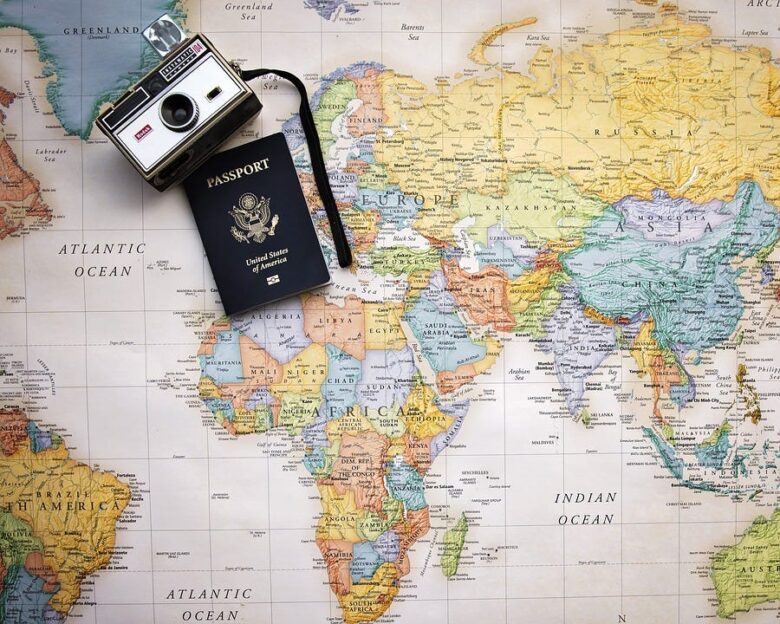An effective travel itinerary provides a framework to keep track of all of your plans while away, while still giving you freedom to discover local recommendations on your own. Begin planning your journey by gathering inspiration through various media. Create a physical vision board, pin destinations on Pinterest, or save inspiring TikToks from travel influencers for planning purposes.
1. Start With Your Goals
Before setting off on any trip, it’s essential to have specific goals in mind. Doing this will ensure your itinerary accommodates everything that matters to you on this adventure.
As your first step, decide the type of trip you’d like. Are you hoping to gain insight into a city’s history, culture, and cuisine, or are you hoping for exciting adventures and unexplored places? Once you know your goals and have created a budget, use it to determine how much money to save for and spend during your travels. Furthermore, your budget can help determine which destinations and activities will make up your itinerary.
2. Create a Budget
Establish a realistic estimate of the costs involved with your dream trip and what savings opportunities exist in order to narrow down destinations and decide how best to use your time. This can help guide your decision process when planning and booking travel arrangements.
Begin your research of ticketed tours, activities, and attractions at your desired destinations by doing your own preliminary price research. When you know roughly how much certain costs will amount to, create a budget for your entire vacation trip. Establish a separate account to address ongoing expenses like mortgage, credit card, and insurance payments and policies – this will ensure they’re paid before leaving on your journey and don’t affect your savings plan.
3. Map Out Your Destinations
Ensure your travel itinerary includes activities you want to do, and do research on your destination prior to making plans for a long trip. By planning ahead and creating an easy-to-follow schedule that maximizes your experiences on vacation.
As part of your itinerary planning, it is advisable to leave room for last-minute changes if necessary and still enjoy an incredible trip on a tight budget. Doing this allows for flexibility should something arise that requires reservations or limited availability, providing you with enough flexibility should something unexpected come up and allowing for last-minute plan alterations without jeopardizing your experience! This tip applies especially if traveling abroad on a budget.
4. Make a List of Must-Do Attractions
Making a list of must-do experiences is both enjoyable and effective in keeping track of travel goals, motivating you to save and plan accordingly. You can use maps, written lists, notes on your phone or computer, or other methods to compile this must-do experience list.
Prioritize your list based on what most excites you. Consider factors like cost and time when prioritizing. Season might also play a factor, as some destinations offer their best experiences during certain months of the year. Research every location on your list by consulting online reviews, testimonials, and videos, as well as consulting family and friends for advice.
5. Create a Schedule
While spontaneous travel can be exciting, planning your itinerary ahead can bring many advantages. Not only can it help organize your days more effectively and cut travel costs down further,. As part of creating your travel itinerary, start by identifying which parts of each city or region you would like to explore. When visiting large cities like Paris or London, dividing their districts can help make travel planning simpler.
As soon as you have an itinerary planned out, identify which attractions or events require immediate consideration, such as museums and restaurants that operate only certain hours. List these first.
6. Make a List of Things to Do
Based on your desired type of trip, creating an itinerary might be useful to get you on your way. Review “best of” lists online as a place to begin; travel guides also serve as useful starting points.
Next, determine your ideal travel dates. For instance, if beach travel is what excites you but is only available during December vacation periods, some destinations will need to be left out. Choose accommodation that fits within your budget, such as hotels, hostels, and homestays. Make use of a large map with expandable screen resolution to visually organize your itinerary.
7. Create a List of Restaurants
Travel itineraries are essential tools for helping travelers have an amazing trip experience. In addition to creating an itinerary in an easily understandable format, including personal tips and advice can add depth and interest during readers’ trips.
Google Maps offers powerful tools for augmenting restaurant itineraries. Starred Places allow travelers to easily recall favorite eateries, while categorizing eateries by cuisine and budget allows personalized culinary itineraries. All these features provide diners and restaurateurs a seamless dining experience.
8. Create a List of Things to Avoid
Traveling can be fraught with many costly mistakes that will waste both your time and money. To maximize efficiency, it is crucial that travelers avoid these missteps as much as possible in order to save both.
Packing too much luggage is one of the most frequent travel mistakes, resulting in extra luggage fees and inconvenience. It is best to pack only what is essential while leaving room for souvenirs.
Another frequent travel mistake is visiting tourist traps. While it is good to experience some popular attractions, it’s equally important to search out hidden gems within your own region for a more authentic travel experience – and these hidden treasures often provide more authentic experiences that are worthy of exploring.
9. Create a List of Things You Want to Do
Preparing a list of activities you want to do when planning your trip is key for an enjoyable journey. Doing this will allow you to decide how many days and attractions/restaurants to visit in each location as well as leave some open time for unplanned adventures or relaxing activities.
Once you’ve created a bucket list, it’s time to research how best to travel between each destination. If transportation proves costly or challenging, consider revising your itinerary, or use this time as an opportunity to network with travel bloggers or fellow travelers!




